Ruibo Wang
Perseus: Leveraging Common Data Patterns with Curriculum Learning for More Robust Graph Neural Networks
Oct 16, 2024Abstract:Graph Neural Networks (GNNs) excel at handling graph data but remain vulnerable to adversarial attacks. Existing defense methods typically rely on assumptions like graph sparsity and homophily to either preprocess the graph or guide structure learning. However, preprocessing methods often struggle to accurately distinguish between normal edges and adversarial perturbations, leading to suboptimal results due to the loss of valuable edge information. Robust graph neural network models train directly on graph data affected by adversarial perturbations, without preprocessing. This can cause the model to get stuck in poor local optima, negatively affecting its performance. To address these challenges, we propose Perseus, a novel adversarial defense method based on curriculum learning. Perseus assesses edge difficulty using global homophily and applies a curriculum learning strategy to adjust the learning order, guiding the model to learn the full graph structure while adaptively focusing on common data patterns. This approach mitigates the impact of adversarial perturbations. Experiments show that models trained with Perseus achieve superior performance and are significantly more robust to adversarial attacks.
End-to-End Uplink Performance Analysis of Satellite-Based IoT Networks: A Stochastic Geometry Approach
Jun 28, 2024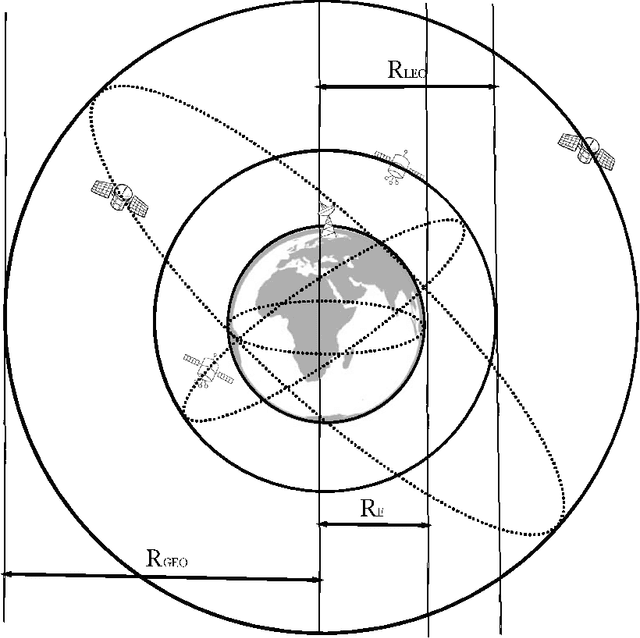
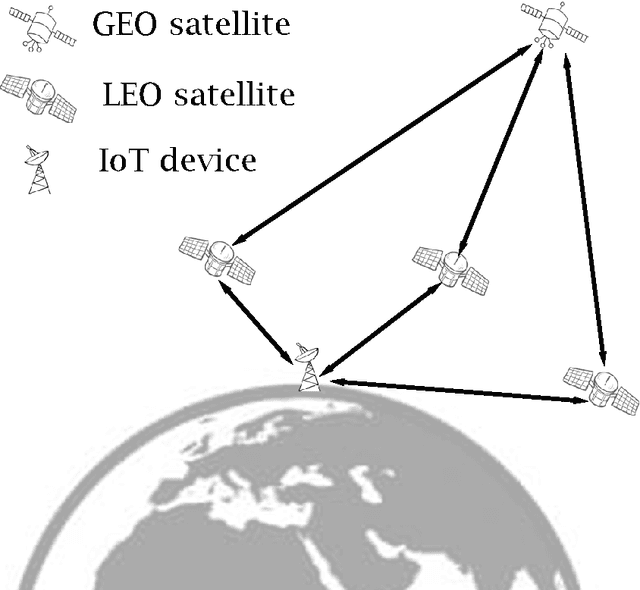
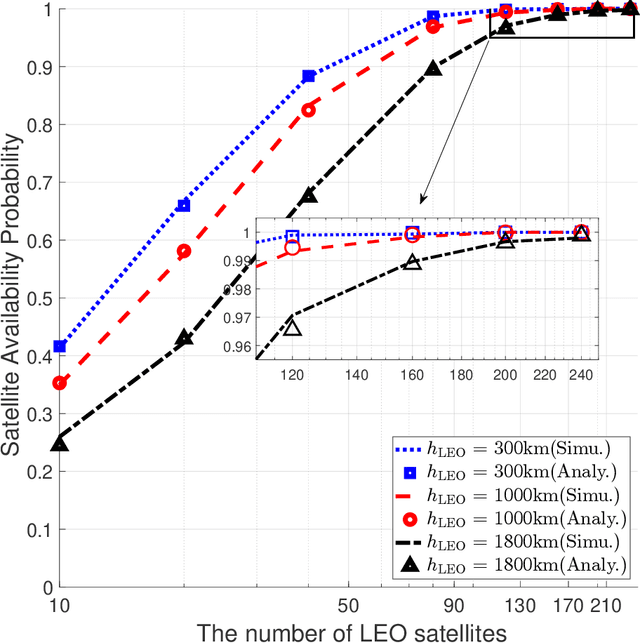
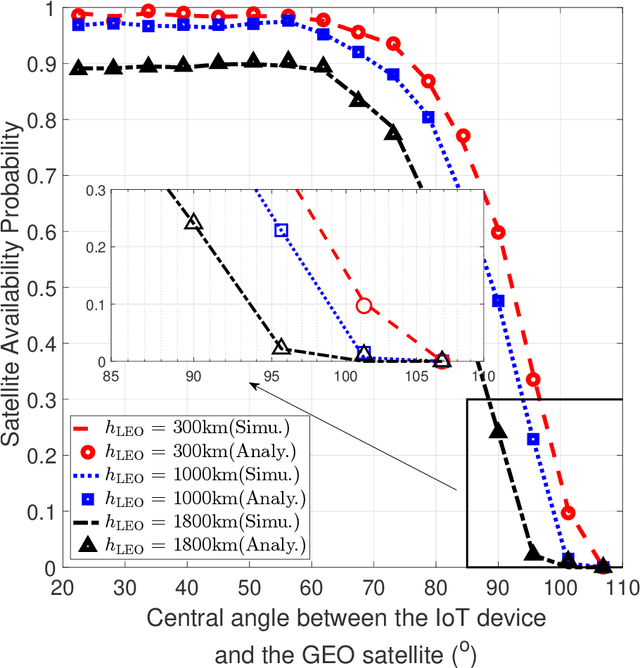
Abstract:With the deployment of satellite constellations, Internet-of-Things (IoT) devices in remote areas have gained access to low-cost network connectivity. In this paper, we investigate the performance of IoT devices connecting in up-link through low Earth orbit (LEO) satellites to geosynchronous equatorial orbit (GEO) links. We model the dynamic LEO satellite constellation using the stochastic geometry method and provide an analysis of end-to-end availability with low-complexity and coverage performance estimates for the mentioned link. Based on the analytical expressions derived in this research, we make a sound investigation on the impact of constellation configuration, transmission power, and the relative positions of IoT devices and GEO satellites on end-to-end performance.
NeRO: Neural Road Surface Reconstruction
May 17, 2024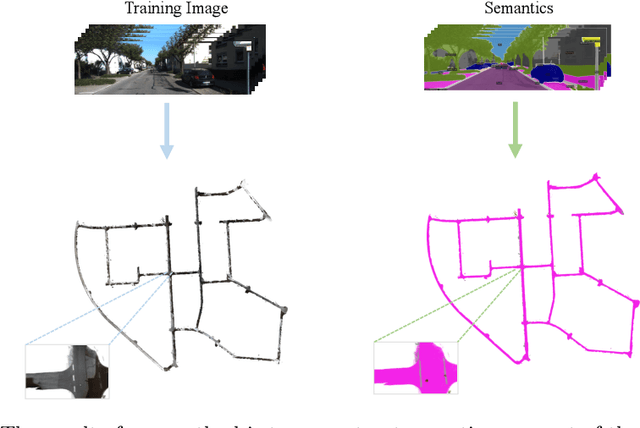
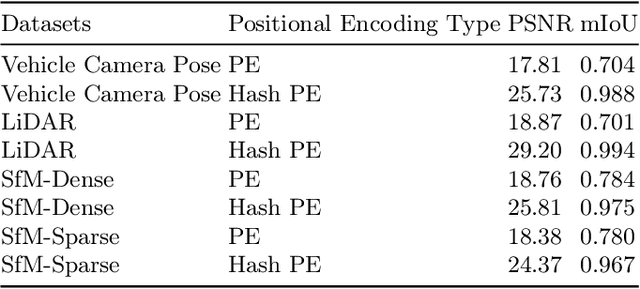
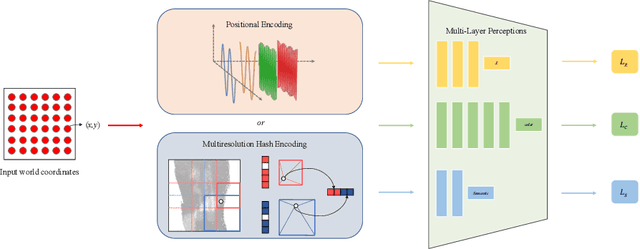

Abstract:In computer vision and graphics, the accurate reconstruction of road surfaces is pivotal for various applications, especially in autonomous driving. This paper introduces a novel method leveraging the Multi-Layer Perceptrons (MLPs) framework to reconstruct road surfaces in height, color, and semantic information by input world coordinates x and y. Our approach NeRO uses encoding techniques based on MLPs, significantly improving the performance of the complex details, speeding up the training speed, and reducing neural network size. The effectiveness of this method is demonstrated through its superior performance, which indicates a promising direction for rendering road surfaces with semantics applications, particularly in applications demanding visualization of road conditions, 4D labeling, and semantic groupings.
Semantic Is Enough: Only Semantic Information For NeRF Reconstruction
Mar 24, 2024Abstract:Recent research that combines implicit 3D representation with semantic information, like Semantic-NeRF, has proven that NeRF model could perform excellently in rendering 3D structures with semantic labels. This research aims to extend the Semantic Neural Radiance Fields (Semantic-NeRF) model by focusing solely on semantic output and removing the RGB output component. We reformulate the model and its training procedure to leverage only the cross-entropy loss between the model semantic output and the ground truth semantic images, removing the colour data traditionally used in the original Semantic-NeRF approach. We then conduct a series of identical experiments using the original and the modified Semantic-NeRF model. Our primary objective is to obverse the impact of this modification on the model performance by Semantic-NeRF, focusing on tasks such as scene understanding, object detection, and segmentation. The results offer valuable insights into the new way of rendering the scenes and provide an avenue for further research and development in semantic-focused 3D scene understanding.
Block-regularized 5$\times$2 Cross-validated McNemar's Test for Comparing Two Classification Algorithms
Apr 08, 2023Abstract:In the task of comparing two classification algorithms, the widely-used McNemar's test aims to infer the presence of a significant difference between the error rates of the two classification algorithms. However, the power of the conventional McNemar's test is usually unpromising because the hold-out (HO) method in the test merely uses a single train-validation split that usually produces a highly varied estimation of the error rates. In contrast, a cross-validation (CV) method repeats the HO method in multiple times and produces a stable estimation. Therefore, a CV method has a great advantage to improve the power of McNemar's test. Among all types of CV methods, a block-regularized 5$\times$2 CV (BCV) has been shown in many previous studies to be superior to the other CV methods in the comparison task of algorithms because the 5$\times$2 BCV can produce a high-quality estimator of the error rate by regularizing the numbers of overlapping records between all training sets. In this study, we compress the 10 correlated contingency tables in the 5$\times$2 BCV to form an effective contingency table. Then, we define a 5$\times$2 BCV McNemar's test on the basis of the effective contingency table. We demonstrate the reasonable type I error and the promising power of the proposed 5$\times$2 BCV McNemar's test on multiple simulated and real-world data sets.
I-WKNN: Fast-Speed and High-Accuracy WIFI Positioning for Intelligent Stadiums
Dec 03, 2021
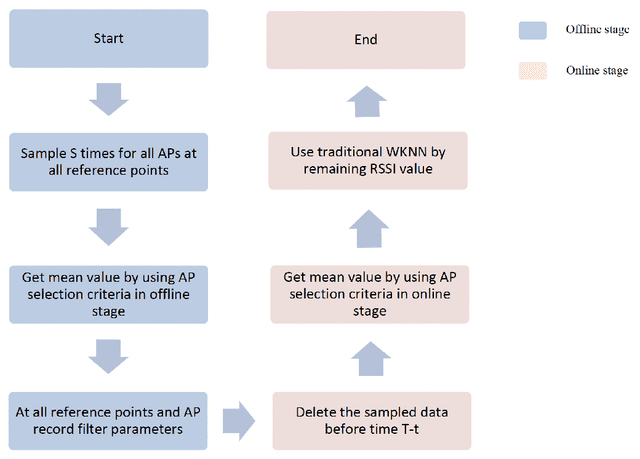

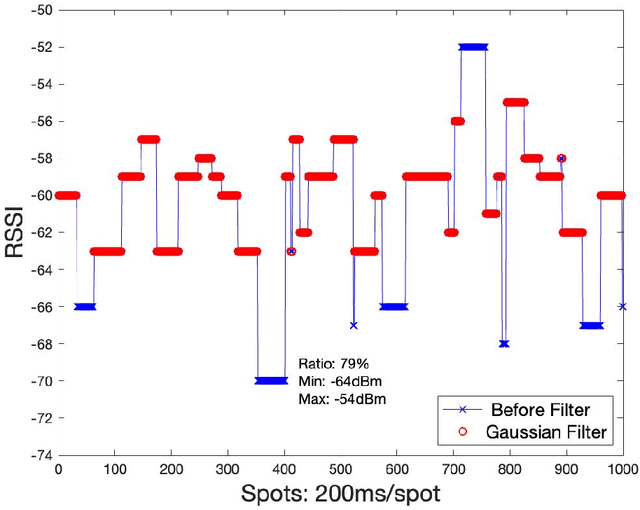
Abstract:Based on various existing wireless fingerprint location algorithms in intelligent sports venues, a high-precision and fast indoor location algorithm improved weighted k-nearest neighbor (I-WKNN) is proposed. In order to meet the complex environment of sports venues and the demand of high-speed sampling, this paper proposes an AP selection algorithm for offline and online stages. Based on the characteristics of the signal intensity distribution in intelligent venues, an asymmetric Gaussian filter algorithm is proposed. This paper introduces the application of the positioning algorithm in the intelligent stadium system, and completes the data acquisition and real-time positioning of the stadium. Compared with traditional WKNN and KNN algorithms, the I-WKNN algorithm has advantages in fingerprint positioning database processing, environmental noise adaptability, real-time positioning accuracy and positioning speed, etc. The experimental results show that the I-WKNN algorithm has obvious advantages in positioning accuracy and positioning time in a complex noise environment and has obvious application potential in a smart stadium.
 Add to Chrome
Add to Chrome Add to Firefox
Add to Firefox Add to Edge
Add to Edge